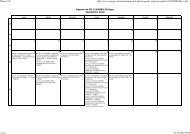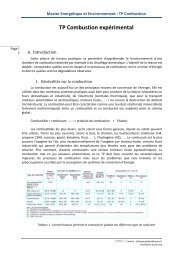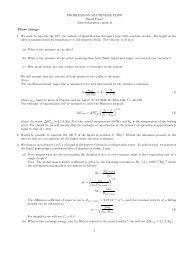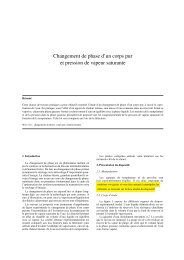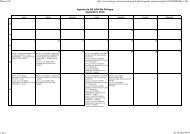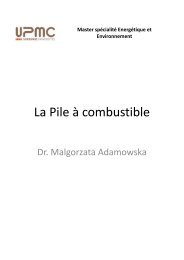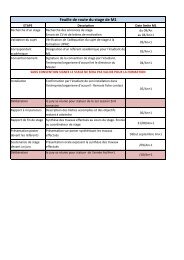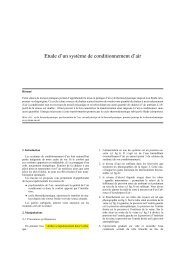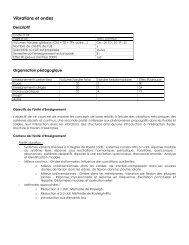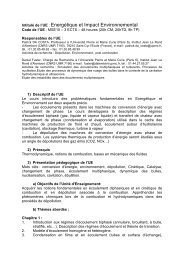CHAPITRE 1: Notions de thermodynamique - Master 2 en ...
CHAPITRE 1: Notions de thermodynamique - Master 2 en ...
CHAPITRE 1: Notions de thermodynamique - Master 2 en ...
Create successful ePaper yourself
Turn your PDF publications into a flip-book with our unique Google optimized e-Paper software.
7. Elém<strong>en</strong>ts <strong>de</strong> thermochimie<br />
Gestion <strong>de</strong> l’Energie et Environnem<strong>en</strong>t<br />
Pollution automobile<br />
Polluants carbonés :<br />
•CO 2<br />
: produit final normal <strong>de</strong> combustion, gaz à effet <strong>de</strong> serre<br />
• CO : produit <strong>de</strong> combustion <strong>en</strong> mélange riche, gaz très toxique (mortel au-<strong>de</strong>là <strong>de</strong> 1000<br />
ppm).<br />
Composés azotés : NOx<br />
• NO : seul oxy<strong>de</strong> d’azote se formant aux températures d’un moteur, peu toxique<br />
•NO 2<br />
: produit d’oxydation du NO, pénétration dans le système pulmonaire<br />
Hydrocarbures imbrûlés ou HC : <strong>en</strong>semble <strong>de</strong>s hydrocarbures<br />
Particules organiques : composés complexes compr<strong>en</strong>ant une phase soli<strong>de</strong> + une phase<br />
liqui<strong>de</strong> (SOF). Particules dangereuses par la prés<strong>en</strong>ce d’hydrocarbures aromatiques<br />
polynucléaires (HAP).<br />
Dioxy<strong>de</strong> <strong>de</strong> soufre SO 2<br />
<strong>CHAPITRE</strong> 1: <strong>Notions</strong> <strong>de</strong> <strong>thermodynamique</strong><br />
39



